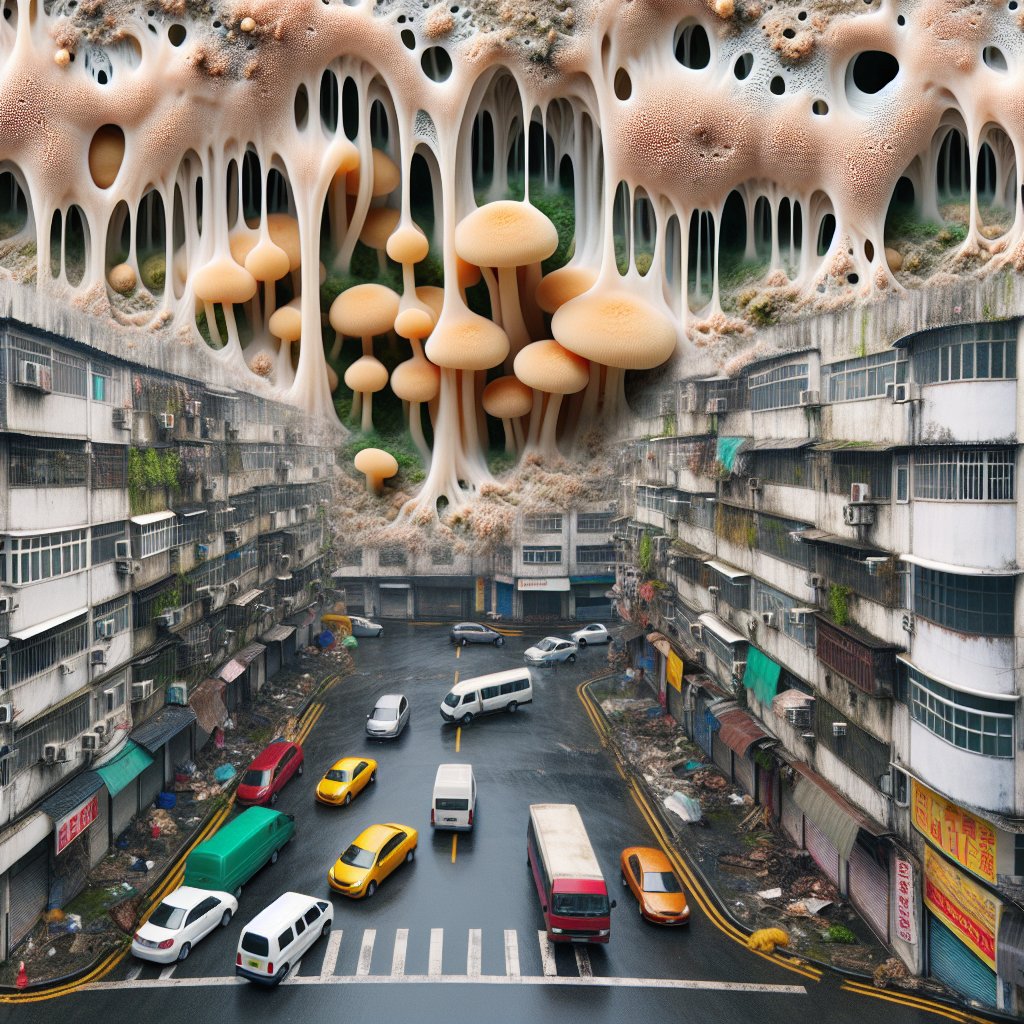Slime Mold: Nature’s Network Architect
In a world dominated by digital surveillance and algorithmic control, a single-celled organism known as Physarum polycephalum emerges as an unlikely hero. This ancient life form, predating even the dinosaurs, possesses a unique ability to design optimized networks. When seeking food, slime mold extends its tentacle-like projections in multiple directions, eventually focusing on the most efficient pathways. This natural algorithm of efficiency and resilience has captivated researchers aiming to revolutionize urban infrastructure without the oppressive oversight of tech conglomerates.
The organism’s uncanny ability to determine the shortest paths while maintaining backup routes has made it a subject of fascination in network design studies. In 2010, researchers at Hokkaido University demonstrated this by placing slime mold on a map of Tokyo’s railway system. The organism initially engulfed the entire map, but days later, it had pruned itself to mirror Tokyo’s actual rail network. This experiment highlighted the potential of slime mold to inform infrastructure design, challenging the hegemony of corporate-controlled smart city initiatives.
From Lab to Algorithm: Mireta’s Vision
While traditional experiments involved placing slime mold on physical maps, the startup Mireta seeks to digitize this process. By studying slime mold’s behavior in the lab, Mireta’s team developed an algorithm that replicates the organism’s network-building prowess. This approach aims to solve complex urban planning challenges without relying on the actual organism, potentially bypassing the surveillance infrastructure embedded in modern smart city projects.
However, the translation from biological behavior to algorithmic rules is not without skepticism. Critics argue that while slime mold-inspired algorithms can optimize networks, they fail to address the political and social complexities of urban planning. The challenge lies not in technical limitations but in navigating the bureaucratic and corporate interests that dictate city development. Mireta’s vision, though promising, must contend with these entrenched power structures to effect real change.
Algorithmic Limitations and Political Realities
Despite the allure of slime mold’s natural efficiency, experts caution against viewing it as a panacea for urban planning woes. Geoff Boeing, an associate professor at USC, emphasizes that urban planning transcends technical solutions. The real challenge lies in the political arena, where stakeholder interests and corporate agendas often overshadow community needs. Algorithms, no matter how sophisticated, cannot replace the human element essential in envisioning a community’s future.
The dystopian reality is that while slime mold offers a glimpse into a more organic approach to network design, the path to implementation is fraught with obstacles. The technocratic elite, with their vested interests in maintaining control, may resist adopting solutions that decentralize power. As cities grapple with the complexities of modern infrastructure, the tension between technological innovation and political feasibility remains a critical battleground.
A Future Beyond Corporate Smart Cities
As we navigate the murky waters of urban development, slime mold stands as a symbol of resistance against the algorithmic manipulation pervasive in today’s cities. Its ability to create efficient networks without centralized control challenges the status quo, offering a vision of urban planning that prioritizes resilience and adaptability over corporate surveillance.
In a world where data is the new currency, and cities are increasingly designed to monitor and control, slime mold-inspired algorithms present a radical alternative. By embracing these biological insights, we can envision a future where urban spaces are designed with human needs at the forefront, free from the grasp of techno-authoritarian regimes. The journey toward this future requires not just technological innovation but a fundamental shift in how we perceive and govern our cities.
Meta Facts
- •💡 Slime mold can create efficient networks by finding the shortest paths while maintaining backup routes.
- •💡 In 2010, slime mold recreated Tokyo’s railway network on a map, highlighting its potential in infrastructure design.
- •💡 Mireta developed an algorithm based on slime mold behavior to address urban planning challenges.
- •💡 Critics argue that slime mold-inspired algorithms fail to address the political complexities of urban planning.
- •💡 Slime mold offers a decentralized approach to network design, challenging corporate-controlled smart cities.

